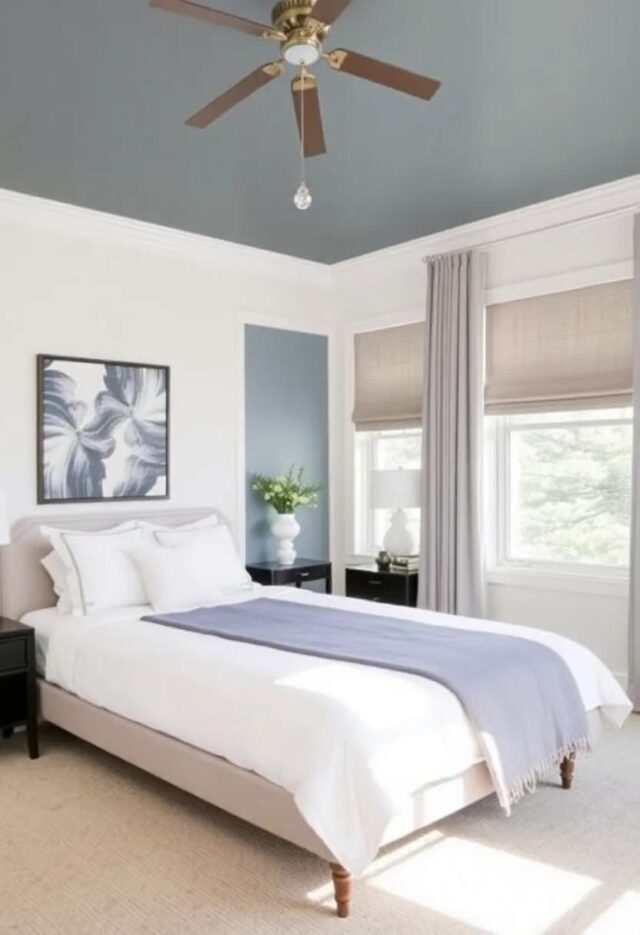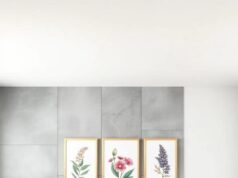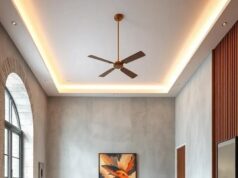In today’s fast-paced world, our personal sanctuaries often become a reflection of our chaotic lives. The bedroom, typically a space for rest and rejuvenation, can easily succumb to overwhelming trends or mismatched styles. Enter transitional bedroom interior design—a harmonious blend of traditional elegance and contemporary comfort that seeks to bridge the gap between the past and the present.This guide invites you to explore the art of creating a balanced oasis within your four walls, where timeless elements meet modern sensibilities. Whether you prefer the warmth of classic details or the sleek lines of modern aesthetics, embracing the transitional approach can transform your bedroom into a serene retreat, fostering tranquility and balance. Join us as we uncover the principles of transitional design and offer practical tips to help you cultivate a space that resonates with harmony.
Creating a Calming Color Palette to Reflect Serenity in Your Bedroom
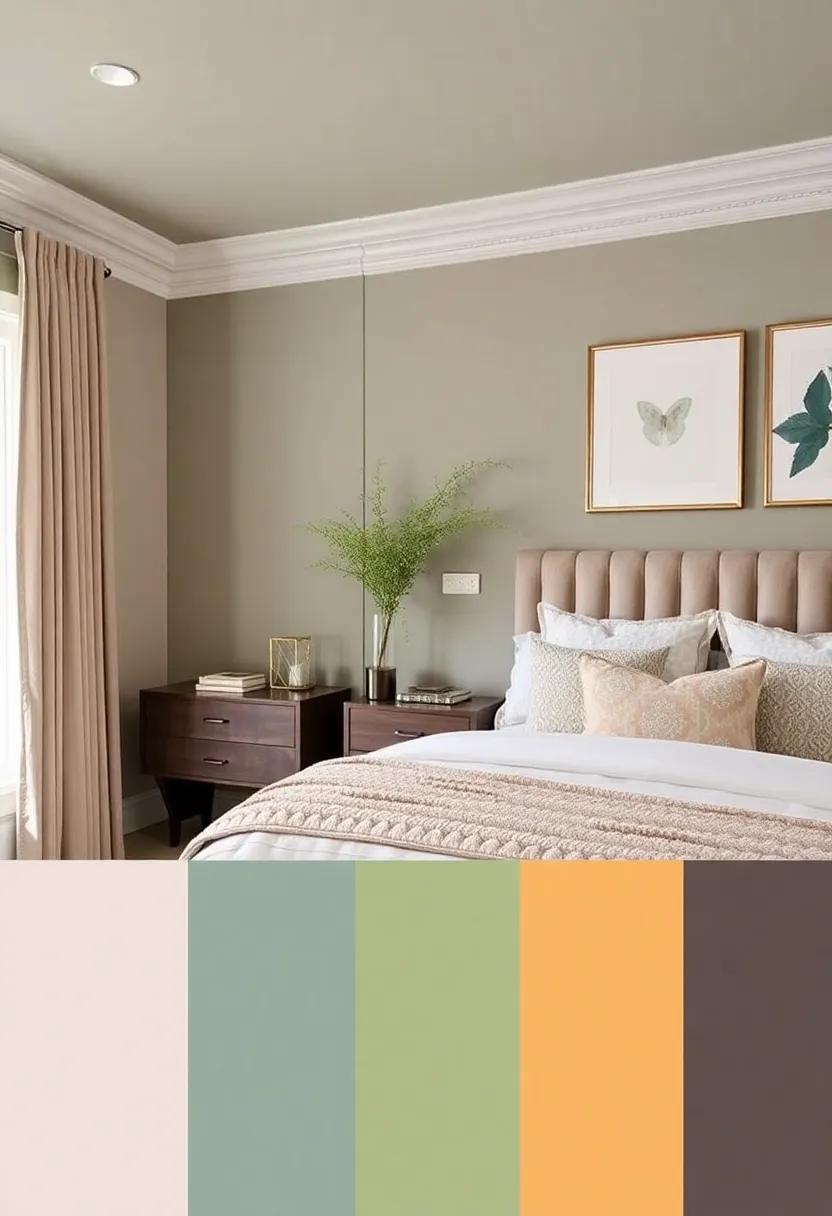
When designing a bedroom that promotes tranquility, choosing the right colors is crucial. A calming palette can serve as the foundation for a serene habitat. to achieve this, consider incorporating a combination of soft, muted tones that evoke feelings of peace. some options include:
- Pale Blues: known for their soothing qualities, reminiscent of the sky.
- Soft Greens: Remind us of nature and promote a sense of balance.
- Warm Neutrals: Creams and taupes provide a cozy backdrop without overwhelming the senses.
- Lavender Hues: Gentle and subtle, perfect for creating a calming atmosphere.
To optimize the serenity in your bedroom, consider pairing these colors with natural materials and textures.For example, incorporating elements like wooden furniture or woven textiles can enhance the peaceful vibe. Below is a simple table illustrating complementary color pairings that work harmoniously together:
| Base Color | Complementary Accent |
|---|---|
| Pale Blue | Soft Gray |
| Soft Green | Creamy Beige |
| Warm Taupe | Lavender |
| Muted Rose | Earthy Brown |
The Art of Layering Textures for a Cozy Transitional Bedroom Experience
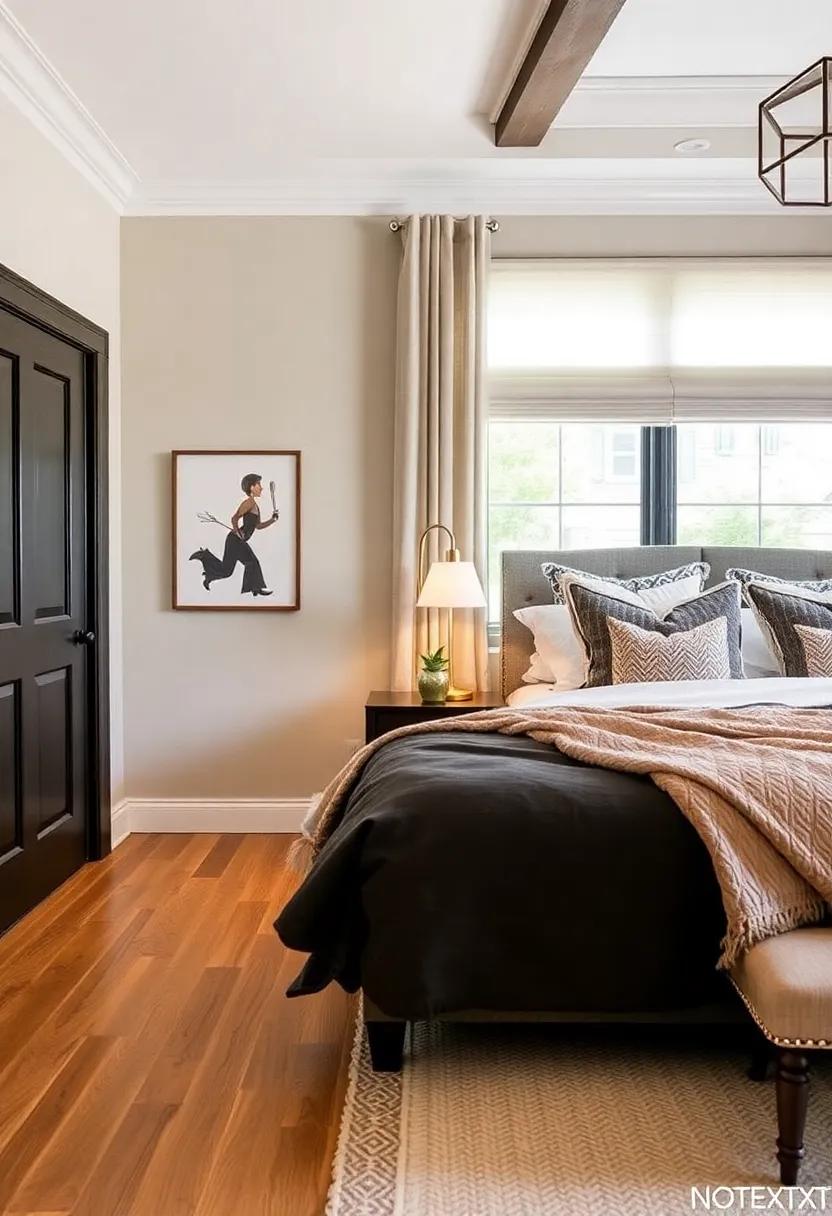
To achieve a cozy atmosphere in a transitional bedroom, layering different textures can make all the difference. Start with the foundation, using a plush area rug over hardwood or laminate flooring to introduce warmth underfoot. Consider incorporating a variety of textiles such as:
- Soft throws draped across a bed or chair
- Velvet or linen pillows for visual comfort
- Knitted or woven baskets for texture and storage
Once the base layers are in place, you can elevate the space by adding contrasting materials. Mixing metals and wood finishes can create a dialogue between modern and traditional elements. Use a combination of:
- Brushed brass lamps paired with reclaimed wood bedside tables
- Glass accents to reflect light and make the space feel airy
- Textured wall art that adds depth and interest without cluttering
Incorporating Natural elements to Enhance Tranquility and Balance
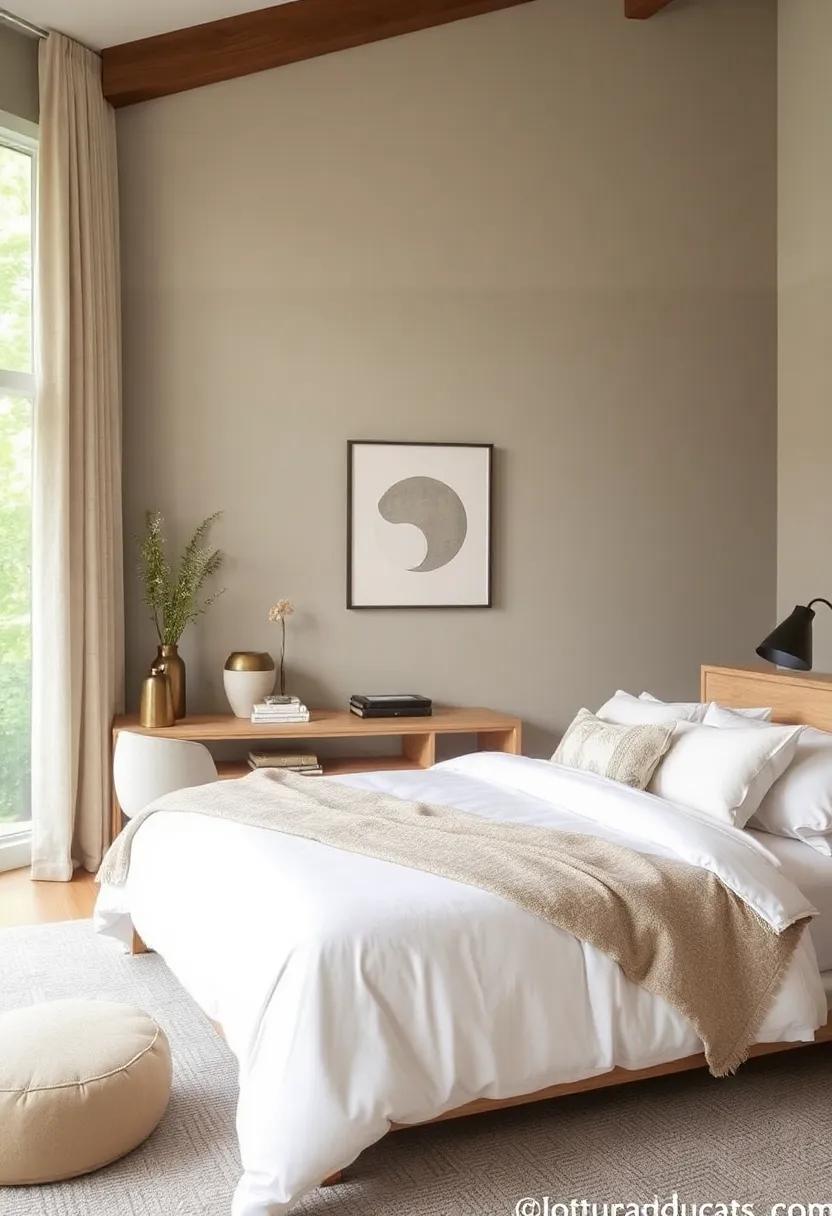
Bringing the outdoors in allows for a serene atmosphere that fosters relaxation. Consider incorporating natural materials like wood, stone, and textiles to cultivate a grounded space. For walls, opt for textured wood paneling or stone accents that can serve as a warm backdrop. Textiles such as cotton and linen in soft,earthy tones can enhance comfort while adding layers of visual interest. Additionally, integrating elements like a woven rug or jute baskets can provide a tactile experience, inviting comfort and tranquility into your personal sanctuary.
To enhance the natural aesthetic, incorporate plants which not only add color but also purify the air. A curated selection of indoor plants, such as peace lilies or succulents, can flourish in strategic corners or on bedside tables. Consider utilizing varying heights and sizes to create a dynamic arrangement. To further promote balance, ensure your lighting is soft and warm—think decorative lamps or dimmable LED fixtures that mimic natural light. Ultimately, the fusion of these elements creates a cohesive environment that soothes the mind and encourages peaceful rest.
Selecting Furniture with Timeless Designs for a Seamless Look
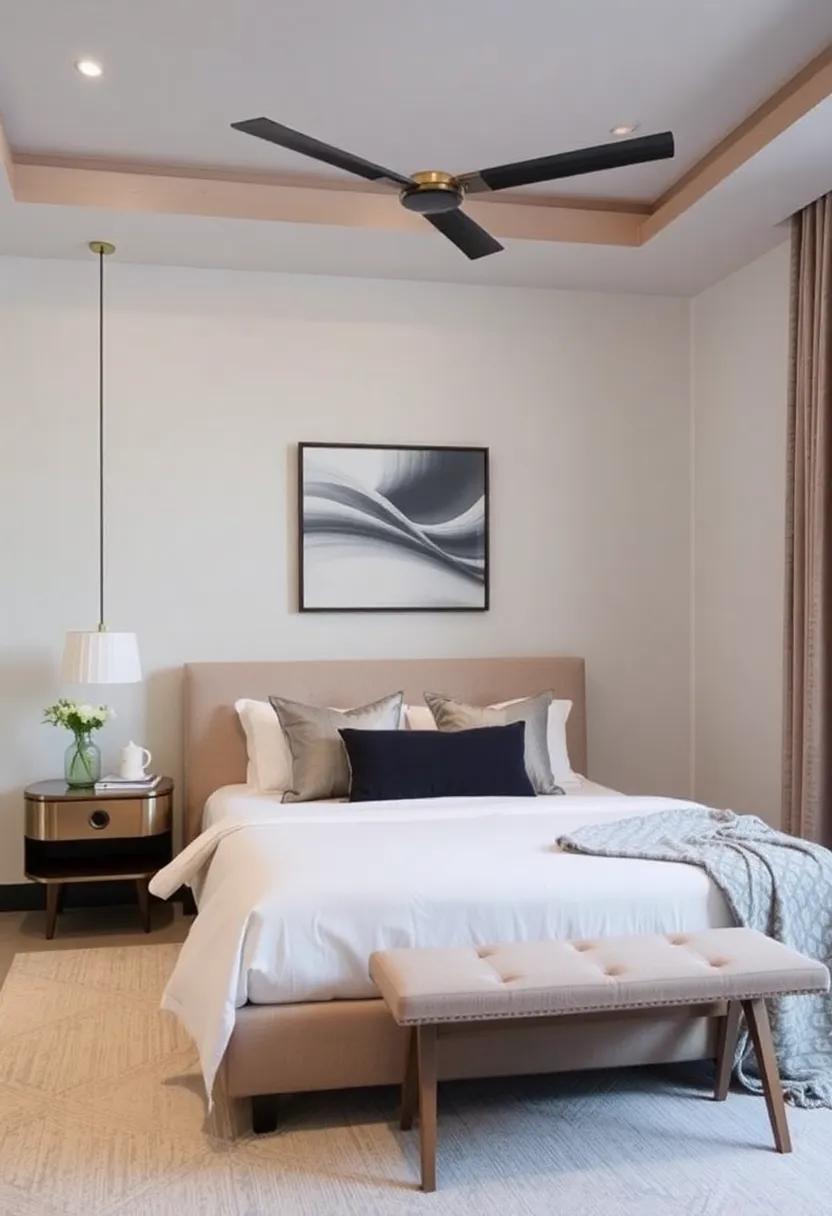
When curating your bedroom furniture, opting for pieces that feature timeless designs is essential for creating a cohesive and inviting atmosphere. Look for furniture that embodies classic lines, quality materials, and neutral colors. These attributes allow you to blend various styles effortlessly,ensuring that your room feels harmonious rather than disjointed. Consider highlights such as solid wood beds with understated headboards, elegant dressers with clean finishes, and soft-upholstered chairs that can seamlessly integrate with both modern and traditional elements. This versatility not only enhances your aesthetic but also contributes to a sense of balance within your space.
In addition to selecting well-crafted furniture, pay attention to how different pieces interact with one another. Aim for a combination of functional and decorative elements that align with the overall vision of your bedroom. For example,mix a classic nightstand with a contemporary lighting fixture to create an intriguing visual dynamic. Utilize an assortment of textures and finishes to maintain interest—think smooth wood paired with soft fabrics, or matte ceramics complemented by polished metals.To highlight these aspects, consider incorporating curated items in your design scheme:
| Furniture Type | Timeless Element |
| Bed Frame | Elegant lines and rich wood grain |
| Dresser | Classic finish with decorative knobs |
| Chair | Upholstered in a neutral fabric |
The Role of Ambient Lighting in Setting a Harmonious Atmosphere
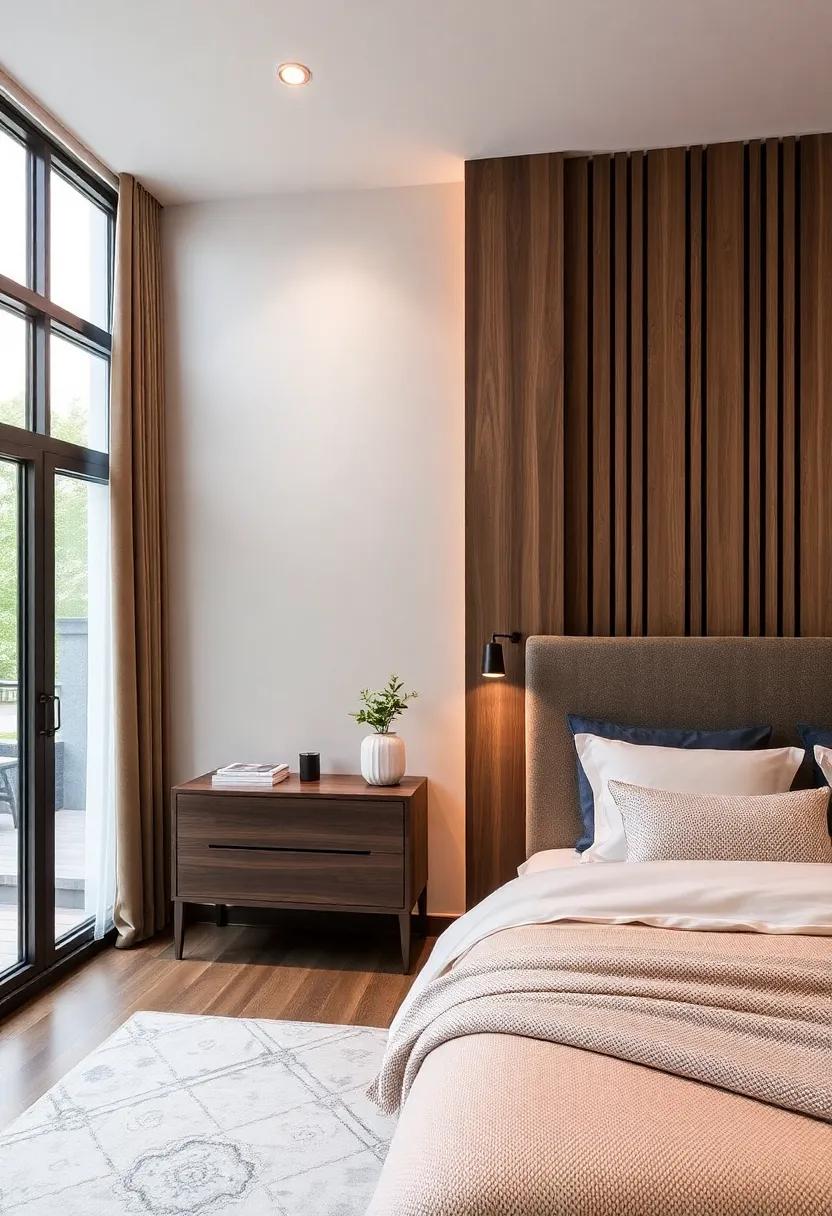
Ambience is crucial in crafting a serene bedroom retreat, and ambient lighting plays a vital role in achieving this. Unlike task lighting, which serves specific functions, ambient lighting envelops the room in a gentle glow that soothes the senses and promotes relaxation. To harmonize the space, consider layering different sources of light such as recessed fixtures, wall sconces, and soft pendant lights. Each source can be controlled independently to create variations in mood throughout the day.This flexibility allows you to enjoy a tranquil environment in the evenings and energizing brightness during the day.
In an effective design, incorporating natural light can further enhance the peaceful atmosphere. Using sheer curtains or strategically placed mirrors can help reflect daylight, making the most of its warm hues. When selecting fixtures, opt for bulbs that emit a warm white light to complement soft color palettes and textures.Here’s a simple breakdown of lighting options that can contribute to an overall harmonious vibe:
| Lighting Type | Purpose | Style |
|---|---|---|
| Recessed Lighting | Provides overall illumination | Minimalist |
| Wall Sconces | Offers accent lighting | Decorative |
| Pendant Lights | Enhances specific areas | Trendy |
| Table Lamps | Creates cozy workspaces | Versatile |
By understanding the importance of lighting and thoughtfully selecting the right combinations, you can create a space that evokes tranquility and charm. The right ambient light can transform even the coziest corners of your bedroom into a calming sanctuary, making it a personal oasis perfect for restful nights and refreshing mornings.
Balancing old and new: Blending Vintage and Contemporary Pieces
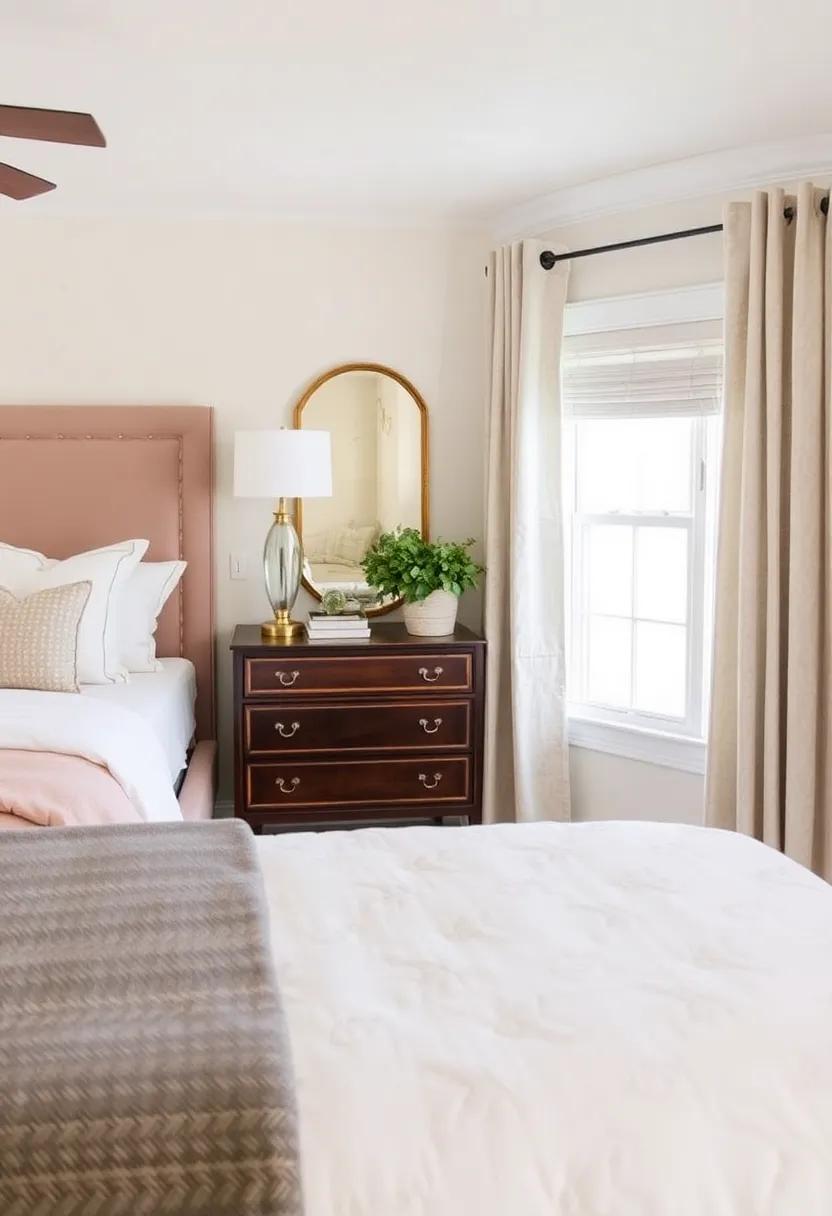
Combining vintage and contemporary elements in your bedroom can create a rich tapestry of style that reflects both your personality and your thankfulness for design history. Begin by selecting a focal point in the room, such as a striking vintage dresser or a modern art piece. Once you have established this centerpiece, coordinate the surrounding decor to enhance its charm while maintaining a cohesive look. For instance,pair sleek modern lighting fixtures with an ornate antique mirror to juxtapose textures and timelines,giving your space a balanced aesthetic that feels dynamic yet harmonious.
To further curate this balance, consider incorporating a mix of materials and colors. The warmth of natural woods can beautifully complement sleek metals, while muted vintage hues provide a backdrop for bold contemporary shades. Create an inviting atmosphere with accessories that bridge the gap between eras—think plush vintage armchairs alongside a minimalist coffee table, or combine geometric patterned pillows with classic floral bedding. This blending technique not only enhances visual interest but also allows each piece to shine,fostering a bedroom environment that celebrates the old and the new in perfect harmony.
Utilizing Symmetry and Balance to Create Visual Harmony in Design
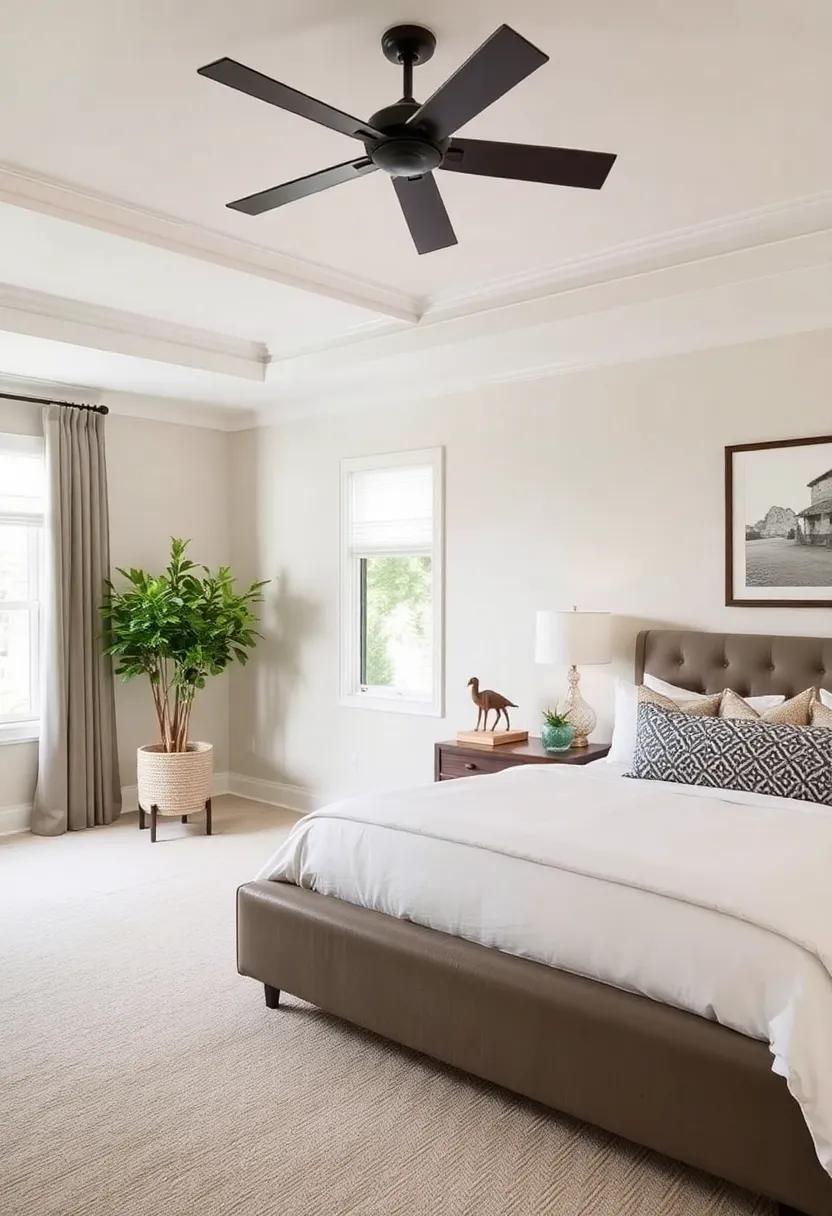
The essence of a well-designed transitional bedroom lies in the masterful use of symmetry and balance. By incorporating paired elements such as bedside tables, lamps, and artwork, you can foster a sense of equilibrium that enhances the overall visual appeal.As a notable example, positioning two identical nightstands flanking the bed not only adds functionality but also creates a serene centered focus.To elevate the experience further, consider using complementary color palettes and textures that resonate with both contemporary and traditional styles. Natural materials—like a wooden bed frame paired with soft textiles—can reinforce the harmonious blend while avoiding any jarring contrasts.
Equally important is the application of balance across different vertical and horizontal planes in the room. This can be achieved by skillfully arranging various furniture pieces to maintain proportion and scale. Incorporating visual weight, such as heavier furniture like a solid dresser, can be offset by lighter elements like sheer curtains or delicate decor accessories. A well-thought-out arrangement might include placing a fabric armchair in one corner to create a cozy reading nook while balancing the opposite space with an oversized potted plant. Such strategic placements invite fluidity and flow, making the room not only visually pleasing but also an inviting retreat.
Understanding the Influence of Space and layout on Bedroom Comfort
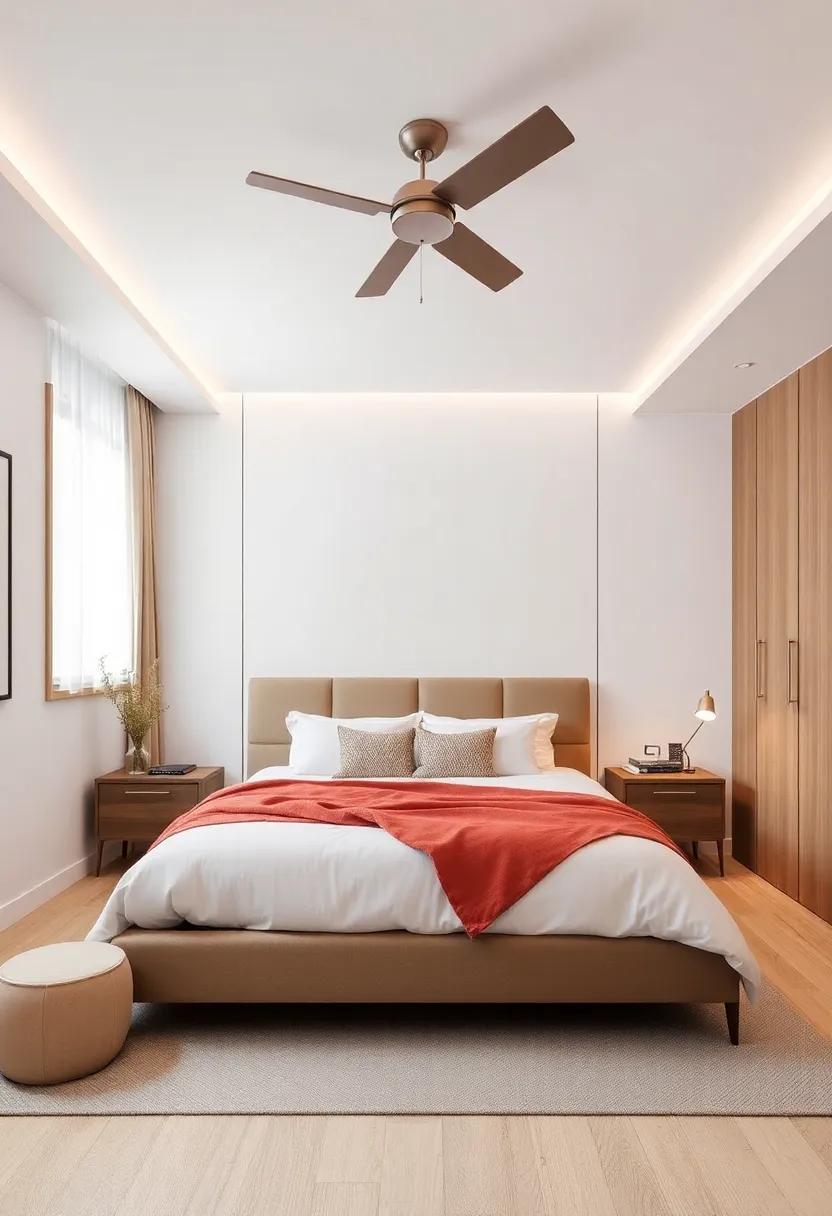
When it comes to creating a haven within your home, the space and layout of your bedroom play pivotal roles in ensuring comfort and style. The arrangement of furniture, the flow of movement, and the choice of colors can substantially impact how welcoming a room feels. To achieve that desired tranquility, consider the following factors:
- Proportions: Scale your furniture according to the room size to prevent overcrowding or emptiness.
- Functional Zones: Designate areas for different activities, such as sleeping, reading, or dressing, to enhance usability.
- Natural Light: Maximize light sources by placing mirrors strategically to reflect light and create an airy feel.
- Color Palette: Choose soothing hues that promote relaxation and reflect your personal style.
A well-considered layout not only enhances aesthetics but also fosters a sense of peace. Consider implementing the following layout tips for optimal comfort:
| Layout Tip | description |
|---|---|
| Bed placement | Position the bed where it offers the best view of the room without obstructing pathways. |
| Simplified Flow | Ensure there is clear space to walk around each side of the bed and entry points. |
| Comfort Accessories | Add personal touches like pillows and throws to cultivate a cozy, inviting atmosphere. |
Exploring Soft Fabrics and Materials for a Warm and Inviting Feel

To create a sanctuary that radiates warmth and comfort, selecting the right fabrics and materials is essential.Soft textiles such as cotton,linen,and wool are ideal for draperies,bedding,and throw blankets,bringing a sense of coziness to your bedroom. Incorporating elements like plush rugs can further enhance the tactile experience, inviting you to sink your toes into a soft embrace. Don’t shy away from layering various textures; mix a silky satin with a chunky knit to create depth and intrigue.
Consider using a palette that brings out the natural hues found in these materials for a cohesive look. While exploring colors,opt for earth tones such as soft browns,gentle greens,and muted grays,which not only evoke tranquility but also highlight the inviting qualities of your chosen fabrics. To assist in blending various elements, here is a simple table to guide your choices:
| Fabric Type | Characteristics | Ideal Use |
|---|---|---|
| Cotton | Breathable and soft | Beddings and curtains |
| Linen | Durable and textured | Table linens and decorative pillows |
| Wool | Warm and insulating | Rugs and throws |
| Velvet | Luxurious and rich | Accent chairs and cushions |
Integrating Personal Touches through Art and Decor Choices
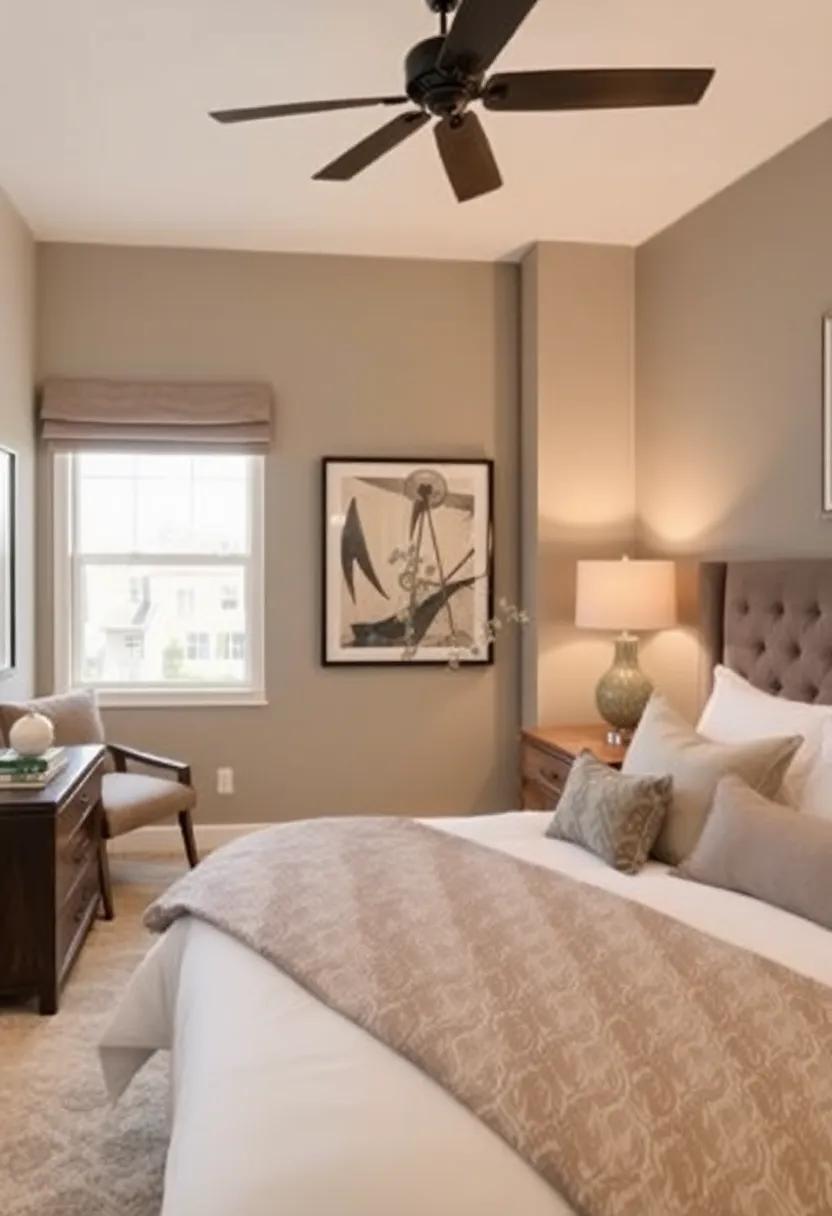
When it comes to creating a transitional bedroom, personal touches through art and decor are key to infusing your individual style into the space. Incorporating pieces that resonate with your identity can turn a generic room into a sanctuary that tells your story. Consider selecting artwork that reflects your passions—whether it’s a stunning landscape painting, a minimalist abstract piece, or a collection of photographs from your travels. Utilize decor items such as handmade pottery or textiles with a history, which can serve as conversation starters while adding texture and warmth to your room.
To further personalize your oasis, think about blending textural elements that inherently embody your character. Layering various materials like wood, metal, and fabric can foster an inviting ambiance. Here’s a brief overview of possible decor choices:
| Item | Type | Purpose |
|---|---|---|
| Framed Artwork | visual Art | Personal Expression |
| Accent Pillows | Textile | Comfort & Style |
| Decorative Mirrors | Functional Decor | Space Enhancement |
| Indoor Plants | Natural Element | Air Quality & Aesthetics |
Balancing these elements meticulously can create a cohesive look while celebrating your unique taste. Don’t hesitate to bring in family heirlooms or mementos from your life’s journey, as they add a layer of depth to your decor, making the space truly yours. By harmonizing these choices, your bedroom will transform into a genuine retreat that radiates warmth and comfort.
Utilizing Space-Saving Solutions for a Functional yet Stylish Bedroom
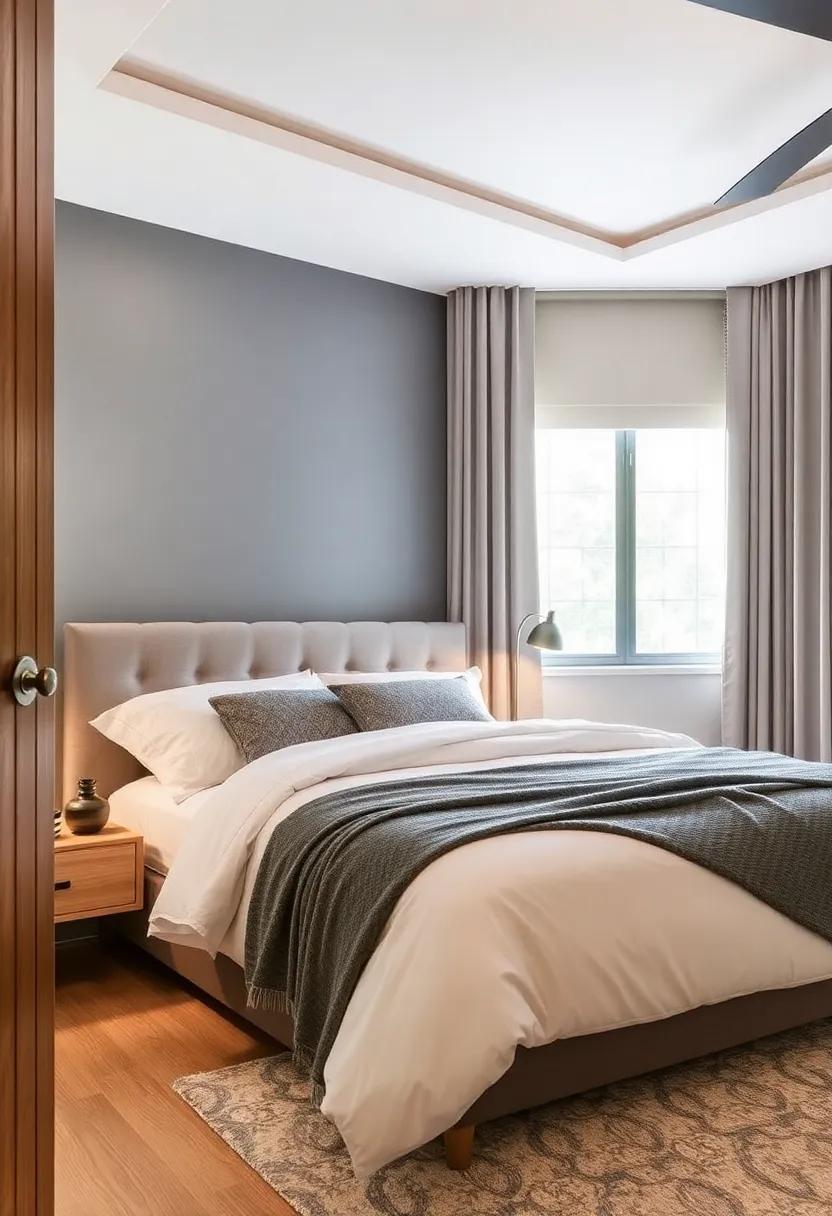
In a world where space is often a luxury, integrating smart storage solutions into your bedroom design can enhance its functionality while maintaining an aesthetic appeal. Consider incorporating multi-functional furniture, such as a bed with built-in drawers or a nightstand that doubles as a side table with storage capabilities.Wall-mounted shelves serve not only as practical storage but also as a way to showcase personal items or decorative pieces,creating visual interest without taking up valuable floor space.
To further optimize your bedroom layout, explore the possibilities of hidden compartments within existing furniture, like ottomans or benches at the foot of the bed. Additionally, using under-bed storage boxes can transform unused areas into valuable space for off-season clothing or extra linens. Consider structuring your room around these space-saving solutions to create a serene environment that balances organization and style. By selecting a cohesive color palette and choosing furniture that complements your transitional theme, you can curate a cohesive space that feels both open and inviting.
The Importance of Focal Points in Transitional Bedroom Design
In transitional bedroom design, focal points serve as the heart of the space, anchoring the room’s aesthetic and providing a visual guide for the eye. A well-chosen focal point can dramatically elevate the entire look and feel of the bedroom, creating a sense of balance and cohesiveness. Common elements to consider for these focal points include:
- Statement Headboards: An intricately designed headboard can serve as an elegant anchor for the bed, offering both comfort and style.
- Artwork: Large-scale artwork or a gallery wall can draw attention and infuse personality into the space.
- Accent Walls: A painted or textured wall can create an exciting backdrop that enhances other design elements.
In positioning these focal elements, it’s essential to ensure they are in harmony with the overall theme of the room. This means selecting pieces that complement the transitional style, which blends both traditional and contemporary elements seamlessly.As an example, pairing vintage-inspired furniture with modern light fixtures can create a striking contrast without losing the desired essence. Consider utilizing a simple table when planning your focal points and their arrangements:
| Element | Style Compatibility |
|---|---|
| Headboard | Wooden (Traditional) & Upholstered (Contemporary) |
| Artwork | Modern Abstract & Classical Landscapes |
| Lighting Fixtures | Chandeliers (Classic) & Sleek Pendants (Modern) |
Creating a Restful Retreat with Thoughtful Bed Placement and Arrangement
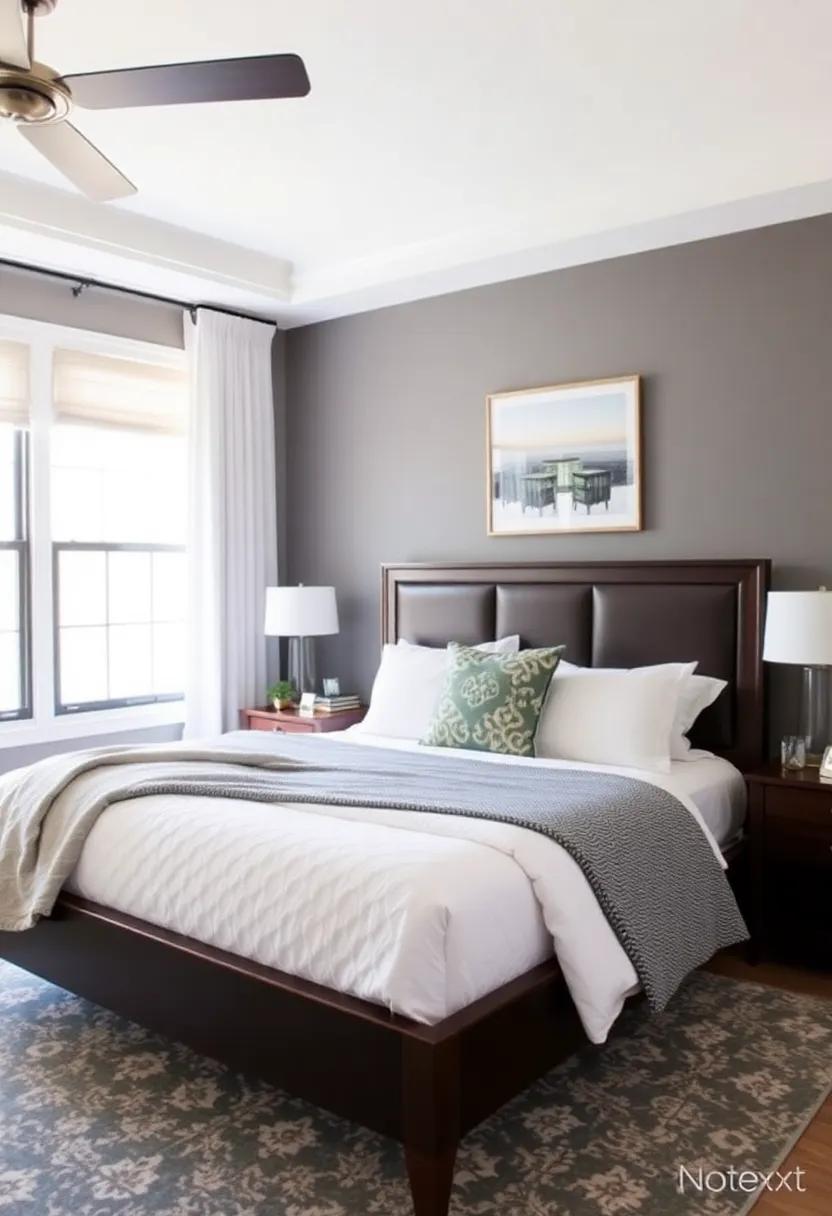
To cultivate a serene atmosphere in your bedroom, the placement of your bed is key. Positioning your bed centrally along the longest wall often creates a sense of balance, allowing for easy access from both sides. This placement not only enhances accessibility but also functions as a natural centerpiece that draws the eye. Complement the bed’s positioning with thoughtful accessories to foster warmth and tranquility:
- Nightstands: Flank each side of the bed to provide symmetry and convenience.
- Lighting: Utilize soft, ambient lighting with bedside lamps to create a calm glow.
- Artwork: Hang soothing artwork or family photos at eye level to personalize the space.
Additionally, consider the arrangement of other furniture pieces to maintain an open flow throughout the room. Avoid overcrowding by spacing out larger pieces, such as dressers and chairs, to create ease of movement and accessibility. A well-placed mirror can also enhance spatial perception, giving the illusion of a larger retreat.Below is a simple guide to effective furniture arrangement:
| Furniture Item | Positioning Tips |
|---|---|
| Bed | Center against the longest wall |
| Nightstands | Equal distance from the bed |
| Dresser | against a wall,opposite the bed |
| Chair | Near the window or in a corner |
Harmonizing patterns and Prints for a Cohesive Aesthetic
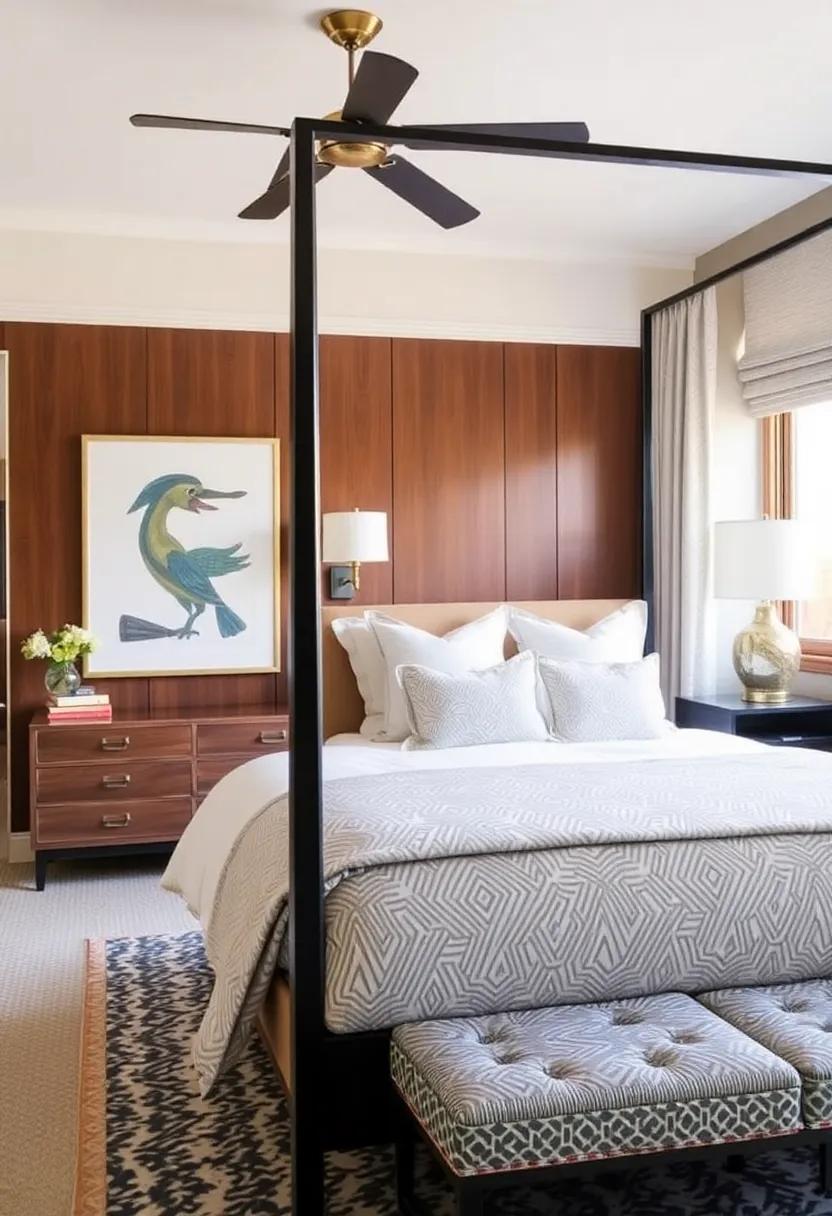
To achieve a harmonious look in your bedroom, it’s essential to blend patterns and prints that complement one another rather than clash. Start by choosing a couple of key colors that resonate throughout the space, then select a variety of textures and designs that incorporate these hues. As a notable example, pairing a bold geometric print on throw pillows with a softer floral pattern on the duvet cover can create a visually dynamic yet cohesive aesthetic. The key is to ensure that all elements tie back to your chosen color palette, creating a seamless flow that feels intentional and calming.
Consider using a layering technique to enhance visual interest while maintaining unity.Here are some suggestions to keep in mind:
- Vary Scale: Mix large patterns with smaller ones for a balanced look.
- Repeat Motifs: Use similar shapes across different prints to foster connection.
- Limit Your Palette: Stick to a few colors to avoid overwhelming the space.
- Consider Scale and Placement: Larger prints often serve as focal points, while smaller prints can complement backgrounds or accent pieces.
To illustrate how various patterns can coexist without compromising aesthetic quality, refer to the table below:
| Print Type | Recommended Pairings |
|---|---|
| Stripes | Floral, geometric |
| polka Dots | Checks, Solids |
| Animal Print | Textured Solids, Earthy Patterns |
Incorporating Smart Technology for Convenience without Compromise

Integrating smart technology into your transitional bedroom design offers the perfect blend of modern convenience and classic aesthetics.Imagine waking up to gentle, gradually increasing light from smart bulbs that mimic the sunrise, creating a serene atmosphere. With the right devices, you can seamlessly control your environment, ensuring optimal comfort without sacrificing style. Consider incorporating a few key elements:
- Smart Lighting: Choose adaptable lighting systems that can change hues and intensities, complementing your room’s mood.
- Automated Shades: Embrace window treatments that adjust automatically to let in just the right amount of natural light.
- Smart Thermostat: Maintain a perfect temperature with programmable settings that adapt to your lifestyle.
A harmonious interplay of tech and design invites functionality while preserving the traditional charm of a transitional bedroom. For those who value both aesthetics and practicality, a smart home hub serves as a central command system, connecting all your devices and allowing for cohesive control. Pairing seamless technology with timeless design elements brings about a sense of unity in your space. Below is a simple comparison of popular smart devices to help you select the perfect components for your bedroom:
| Device | Features | design Compatibility |
|---|---|---|
| Smart Bulbs | Customizable colors, dimmable | Available in vintage styles |
| Smart Thermostat | energy-saving, remote control | sleek, minimalistic design |
| Automated Blinds | Programmable schedules, app controlled | Variety of fabrics and patterns |
the Magic of Mirrors in Expanding Space and Light in a Bedroom
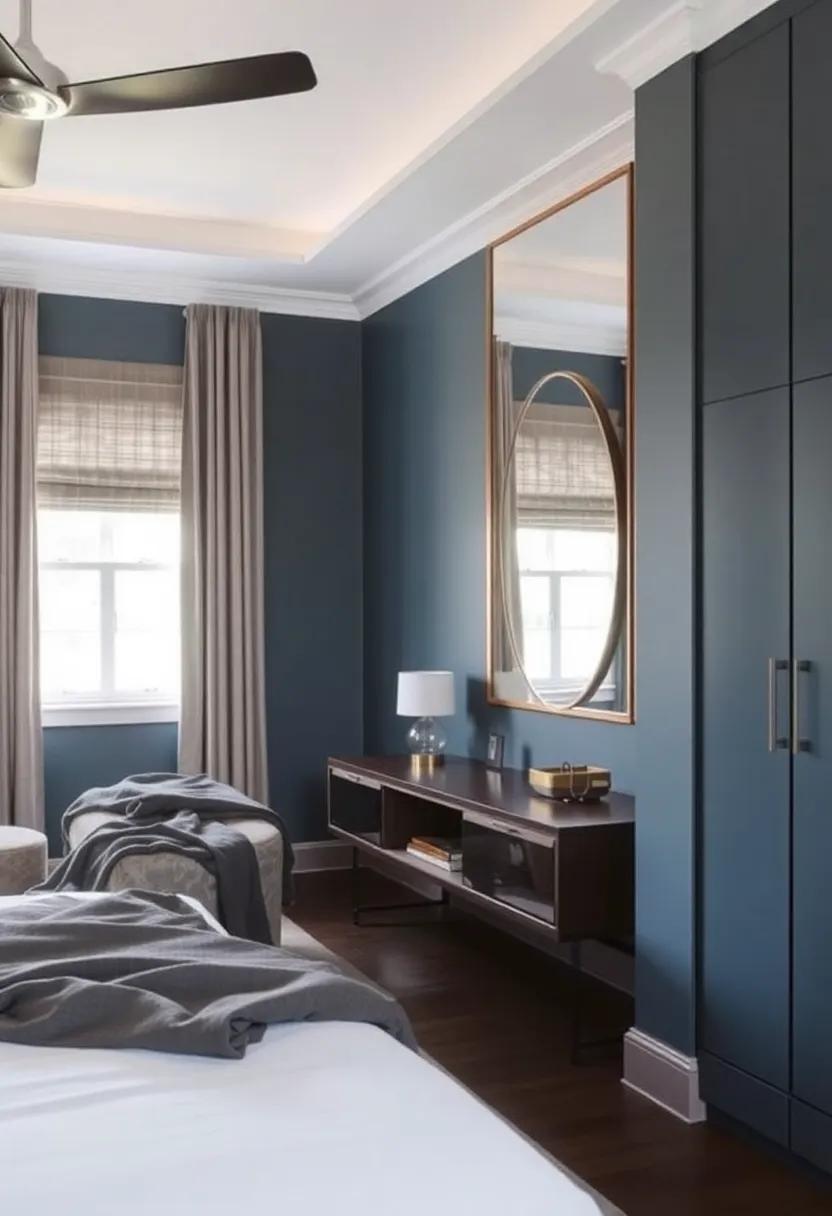
Mirrors have an remarkable ability to transform a space, making them a staple in the art of interior design, notably in the bedroom. When strategically placed, they can create the illusion of a larger area, drawing in light and enhancing the overall ambiance. Consider these captivating uses of mirrors:
- Accent pieces: A beautifully framed mirror can serve as a focal point,adding elegance to the room.
- Reflective surfaces: Positioning mirrors across from windows allows them to bounce natural light, illuminating the space throughout the day.
- Layering visuals: Using various mirror sizes and shapes adds depth, making the environment feel more expansive and inviting.
Incorporating mirrors also carries practical benefits, enhancing functionality while maintaining aesthetic appeal. They can be utilized to achieve a harmonious balance between different design elements. A well-placed mirror can:
- Enhance mood: Creating a brighter atmosphere can elevate your spirits in a private sanctuary.
- Increase versatility: Mirrors can adapt to any style, complementing both traditional and modern decor.
- Offer style continuity: Use mirrored surfaces on furniture or decor to create coherent connections throughout the room.
Crafting a Serene Atmosphere with Calming Scents and Aromatherapy
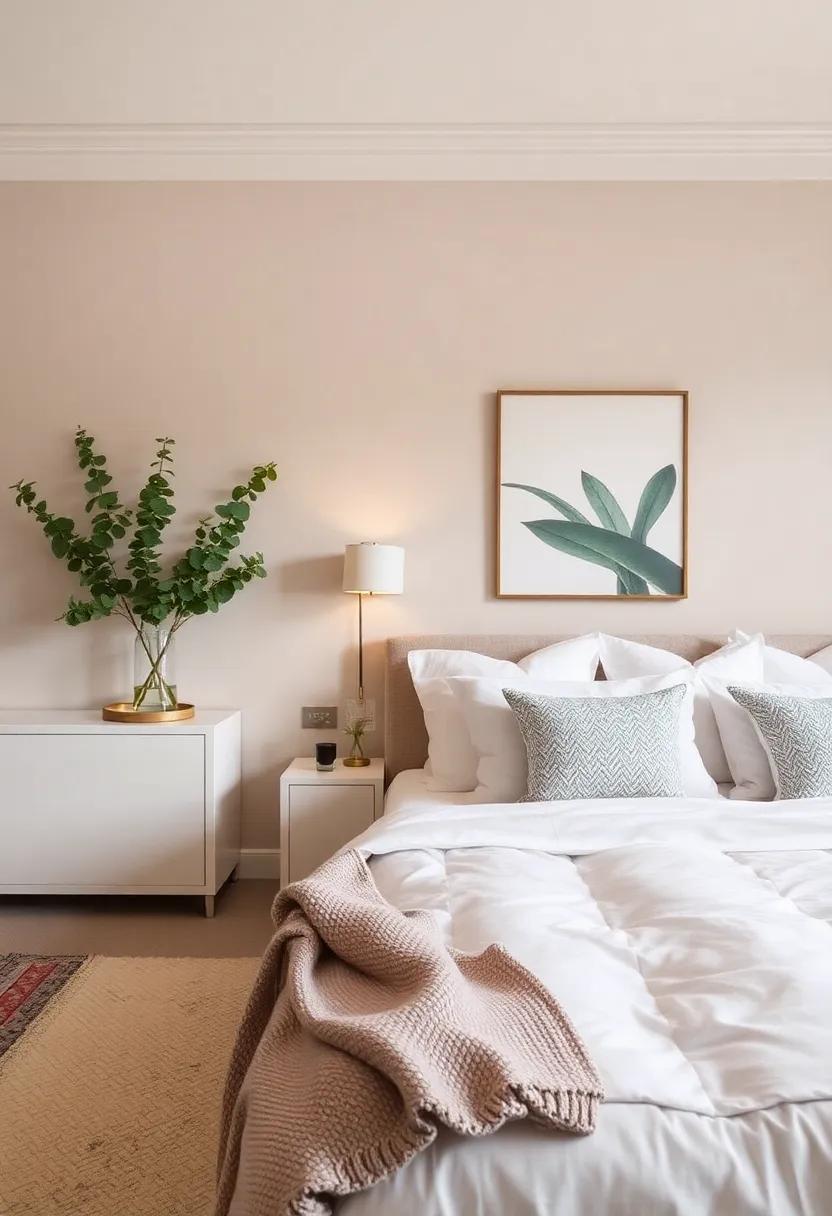
Transform your bedroom into a personal sanctuary by incorporating calming scents that evoke tranquility and relaxation. Aromatherapy is an art that utilizes essential oils from nature to enhance your emotional and psychological well-being. To initiate this sensory journey, consider adding a diffuser that disperses these soothing aromas throughout your space. Popular options for achieving serenity include:
- Lavender - Known for its calming properties, it’s perfect for promoting restful sleep.
- Chamomile – A gentle scent that soothes the mind and reduces anxiety.
- Geranium - Balances the emotions and promotes feelings of peace.
- Ylang Ylang – Reduces stress and creates a romantic atmosphere.
Incorporate these scents into your transitional bedroom design not just through diffusers,but also with candles or natural potpourris. Enhance the visual appeal by selecting chic, minimalistic vessels to house these aromatic elements. For those looking to explore a more structured approach, utilizing a simple table for scent combinations can streamline your scent experience:
| Essential Oil | Effect | Best Use |
|---|---|---|
| Lavender | Relaxation | Before Sleep |
| Chamomile | Stress Relief | Bath Time |
| Geranium | emotional Balance | During Meditation |
| Ylang Ylang | Romantic Mood | Date Night |
By thoughtfully considering the scents and their applications, you can cultivate an environment that nurtures serenity and enhances overall well-being in your transitional bedroom. The harmonious blend of aromatherapy and design will invite peace and relaxation each time you step into this cherished space.
Choosing the Right Window Treatments for Style and Practicality

When it comes to complementing your transitional bedroom design, selecting the right window treatments plays a vital role in achieving a balanced look. Consider how your choice can enhance the aesthetic while also serving practical functions. Layering textiles can add depth and dimension, creating a cozy atmosphere. Options like sheer curtains paired with heavier drapes provide flexibility for both natural light and privacy, making it easy to tailor the ambiance according to the time of day and mood.Striking the right balance between functionality and style is key,with elements such as color,pattern,and fabric weight all contributing to the overall success of the design.
Along with aesthetics, the practicality of your window treatments cannot be overlooked. Pay attention to factors such as light control, energy efficiency, and ease of maintenance. Here are a few considerations to keep in mind:
- Light Control: Blackout shades for complete darkness or light-filtering options for a soft glow.
- Energy Efficiency: Insulated curtains can help maintain temperature and reduce energy bills.
- Maintenance: Choose washable fabrics or materials that resist dust and fading.
By thoughtfully combining style with functionality, you can create a harmonious environment that reflects your personal taste while thriving in everyday use.
Mindful Decluttering: How to Achieve a Peaceful Bedroom Sanctuary
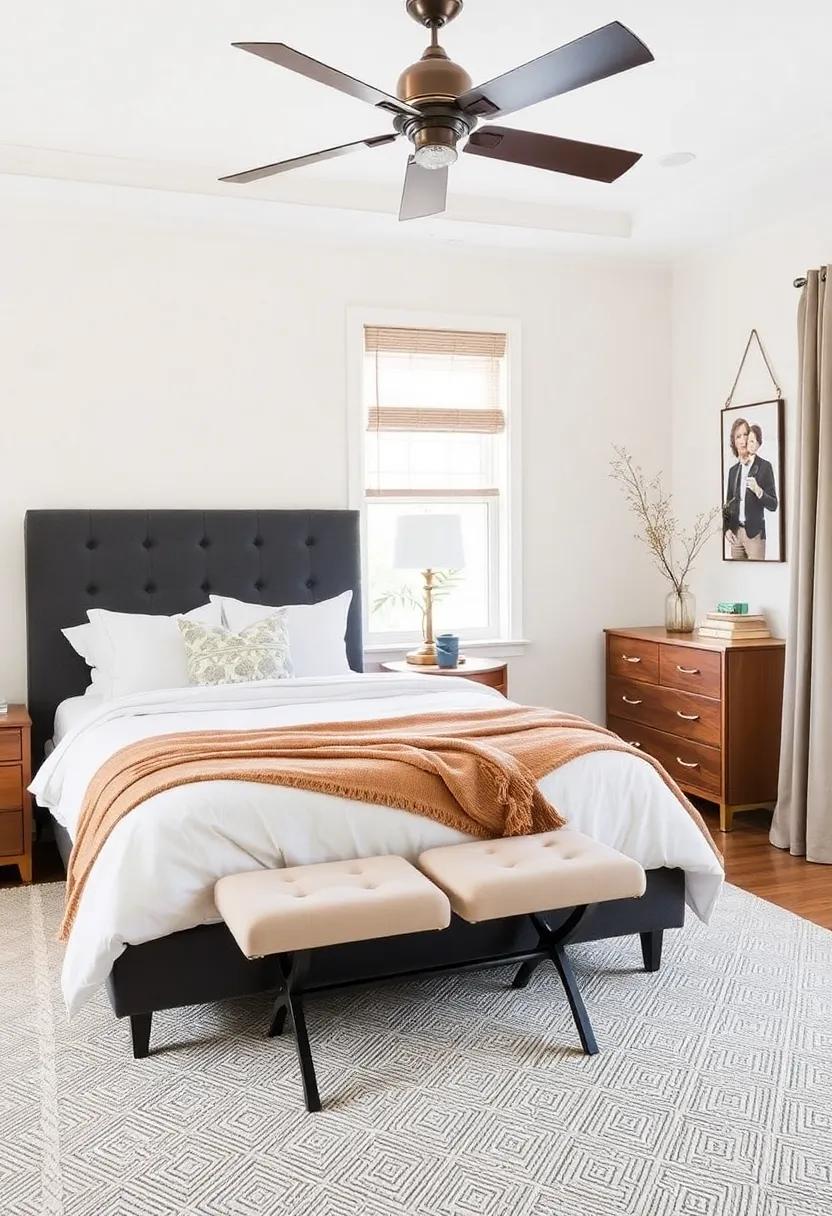
Creating a peaceful bedroom sanctuary begins with letting go of what no longer serves you.As you embark on the journey of mindful decluttering, consider the items that bring you joy and those that weigh you down.Start by evaluating each piece in your room: ask yourself if it sparks happiness or simply occupies space. Consolidate your belongings by grouping similar items together,which not only makes the task manageable but also reveals patterns in what you truly cherish. You might find it helpful to create distinct areas for the following:
- Essentials: Items used daily, such as bed linens and clothing.
- Sentimental Pieces: mementos that hold emotional value.
- functional Decor: Decorative items that serve a specific purpose.
Incorporating your newfound clarity into your bedroom design can elevate your space from chaotic to calm.Focus on minimalistic aesthetics by selecting a few statement pieces that resonate with your personal style. Balance is essential; look for ways to harmonize shape, texture, and color throughout the room.Consider furniture arrangements that promote ease of movement and relaxation, allowing natural light to filter through unimpeded. Below is a simple guide to help you maintain a serene environment:
| Timeframe | Task |
|---|---|
| Daily | Make your bed and tidy surfaces. |
| Weekly | Review items and declutter as needed. |
| Monthly | deep clean and rearrange decor for fresh energy. |
Transforming Neglected Spaces into Cozy Transitional Retreats
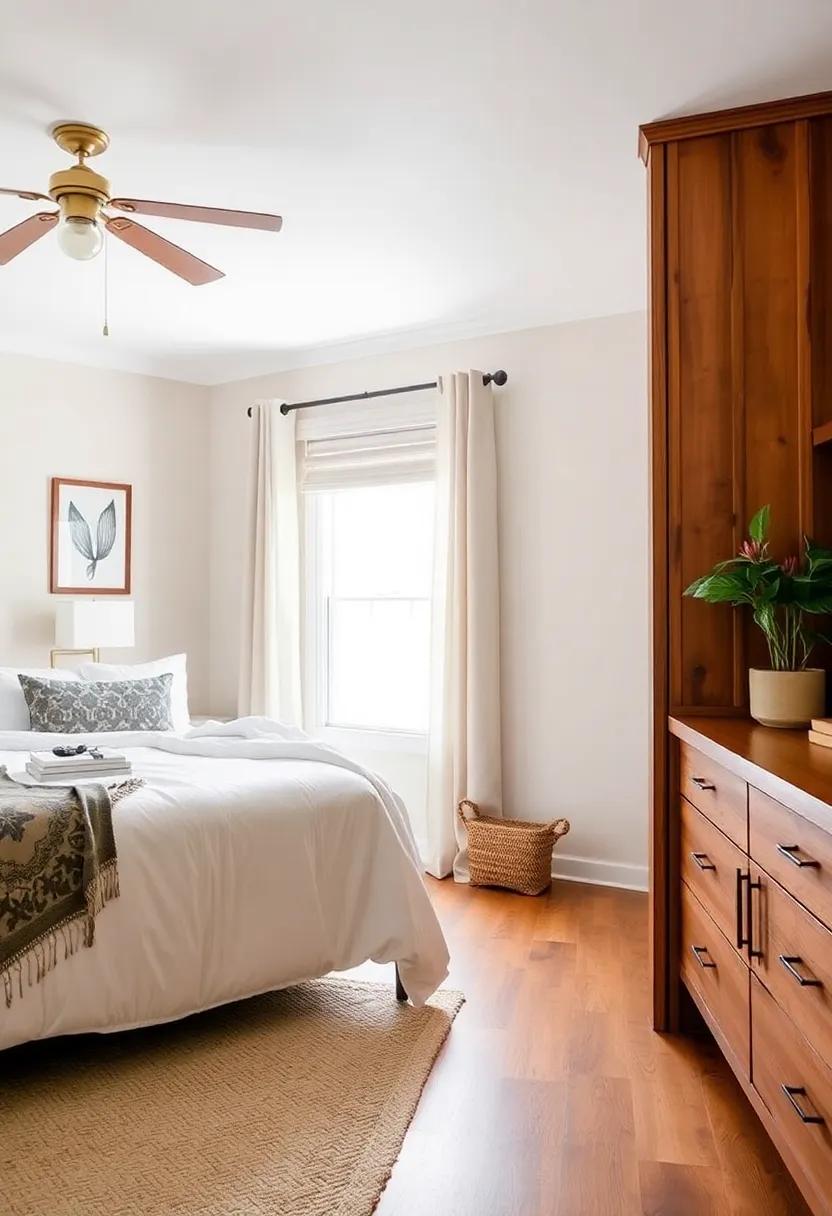
Transforming overlooked corners of your home into welcoming sanctuaries can be an exciting journey. Start by identifying spaces that feel underutilized or neglected, such as a dimly lit attic, a sparse corner of your bedroom, or even a spot under the staircase. With a little imagination, you can breathe new life into these areas by incorporating essential elements that foster relaxation and comfort. consider these key aspects:
- Natural Light: Maximize the use of windows or add soft lighting to create a warm atmosphere that brings the space to life.
- Textural Variety: Use a mix of fabrics—like soft linens, plush throws, and textured rugs—to create an inviting and cozy feel.
- Personal Touches: Display meaningful items such as photos, plants, or art that reflect your personality and stories.
Creating a cozy retreat also involves thoughtfully consolidating the space to enhance its function. Consider multifunctional furniture that serves various purposes, like a stylish bench that can double as storage or a compact desk that fits snugly in a nook. Organizing layout and incorporating adaptable decor not only makes the space practical but also visually appealing. When designing your sanctuary, keep in mind these essential features:
| Feature | Description |
|---|---|
| seating Options | Comfortable chairs or poufs to create a reading nook. |
| soft Lighting | Use lamps or fairy lights to set a calming tone. |
| Materials | Incorporate wood,textiles,and metals for an eclectic feel. |
Emphasizing Personal Style with Accessories and Accent Pieces
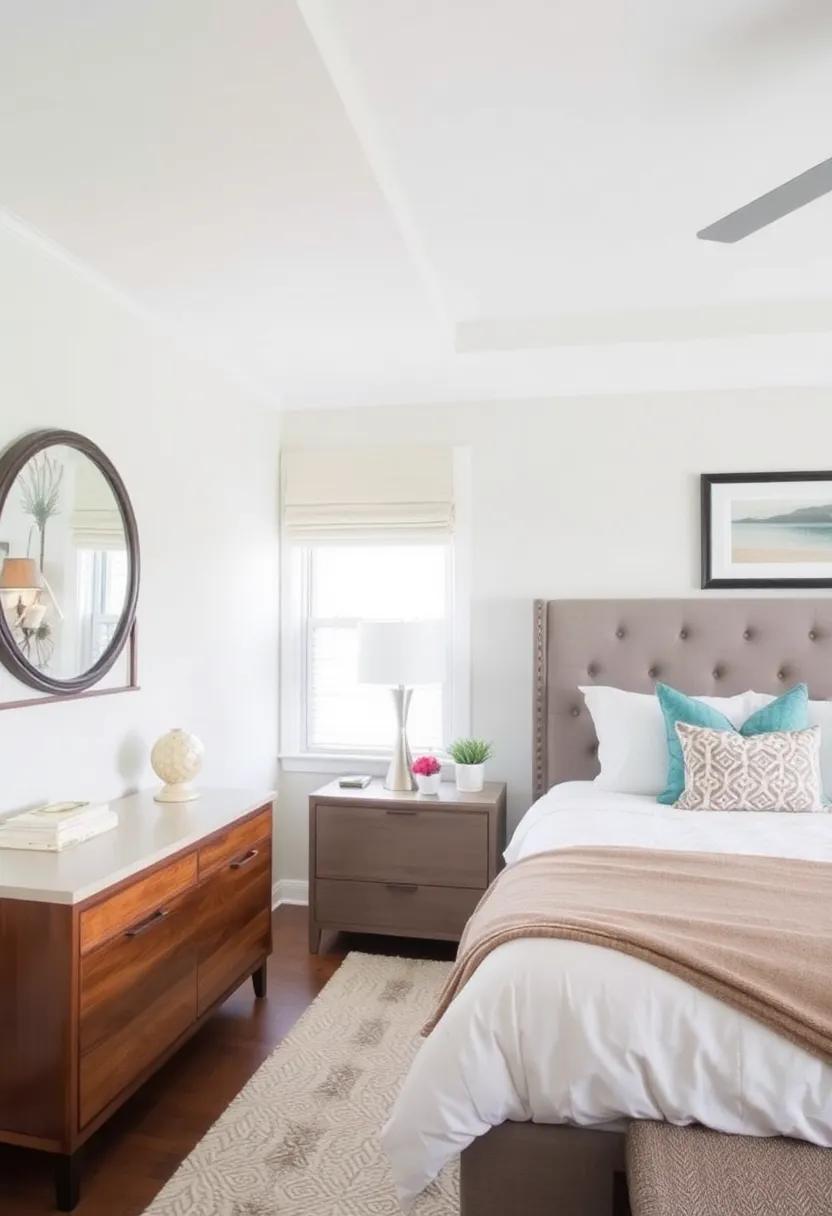
Accessorizing your bedroom with the right pieces can elevate your personal style and create an inviting atmosphere that reflects your unique personality. Accent pillows, carefully chosen, not only enhance comfort but also allow you to play with patterns and colors that resonate with your aesthetic. Consider incorporating a mix of textures, such as velvet, linen, or cotton, to add depth to your bedding. Additionally, throws or rugs serve as both decorative elements and functional pieces that can tie various elements of the room together. A well-placed blanket or a soft area rug can create zones of relaxation and make your space feel cohesive.
Artwork, lighting, and decorative items can be the cherries on top of your interior design cake. consider including framed prints or a statement piece of art that speaks to you and complements your color palette. Choose stylish lamps or sconces that offer both functionality and charm; their warmth can transform the ambiance of your room. Don’t underestimate the impact of greenery; plants not only purify the air but also inject a lively freshness into your space.Below are suggestions for incorporating these accent pieces:
| Accent Piece | Style Goal |
|---|---|
| Accent Pillows | Add depth and comfort |
| Blankets | Introduce texture and warmth |
| Artwork | Express personal style |
| Lamps | Enhance lighting and mood |
| Plants | Add liveliness and freshness |
Bringing the Outside In: Designing a Harmonious Connection with Nature
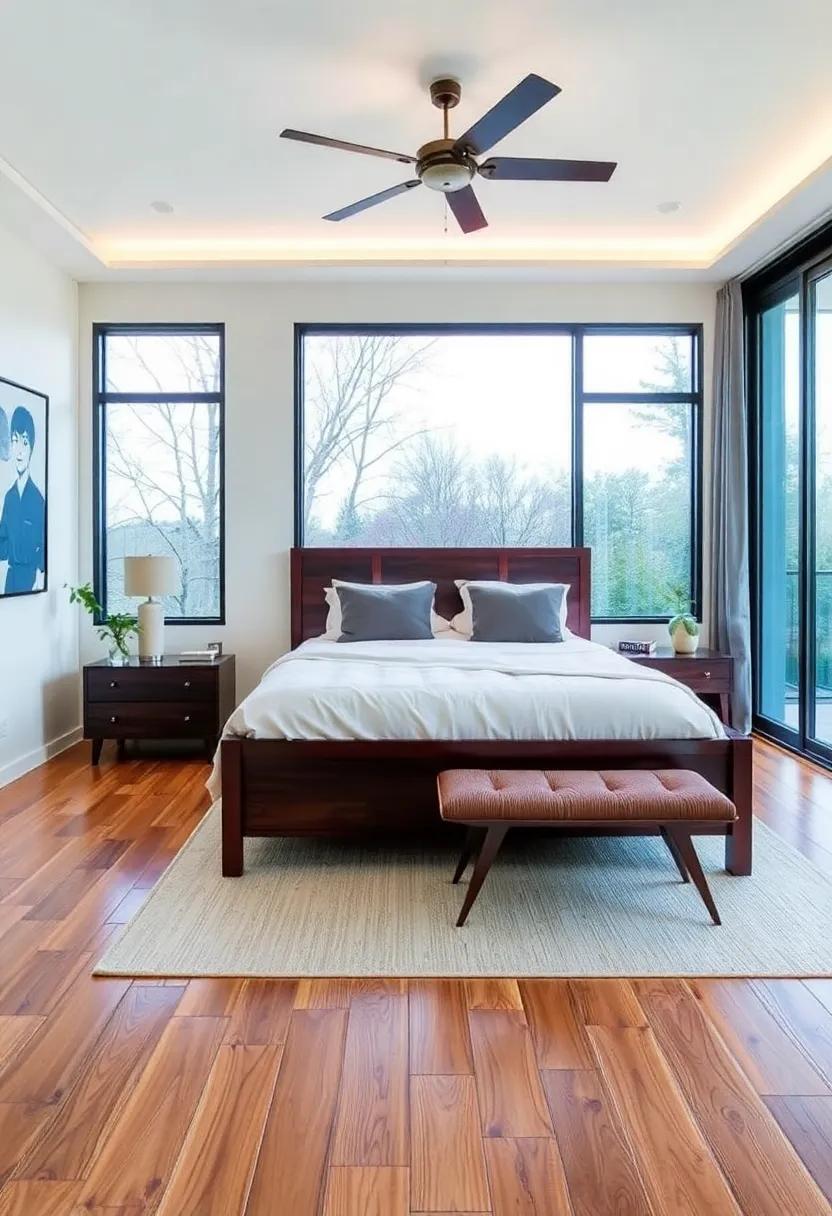
Integrating elements of nature into your bedroom design can transform your personal space into a peaceful sanctuary. Consider incorporating natural materials such as wood, stone, or bamboo to create a tactile connection with the environment. Soft, organic shapes found in furniture and decor can evoke the feel of the outdoors, while a muted color palette inspired by earthy tones can enhance this connection. Key elements to explore include:
- Large Windows: Allow ample natural light to flood the room, creating an airy atmosphere.
- Indoor Plants: Introduce greenery with potted plants or hanging planters to boost air quality and serenity.
- nature-Inspired Textiles: Use fabrics that mimic organic patterns or colors, such as floral drapes or linen bedding.
Additionally, the concept of blending indoor and outdoor spaces can be achieved through subtle details. Creating a seamless transition can minimize barriers and enhance the flow between areas. Adding elements such as a small indoor water feature or a wall mural depicting nature can foster a refreshing ambiance. Consider these practical enhancements:
| element | Impact |
|---|---|
| Wooden Furniture | Warmth and Earthiness |
| Textured Rugs | comfort and Natural Feel |
| Natural Light | Serenity and Openness |
Creating the Perfect Reading Nook for Relaxation and Enjoyment
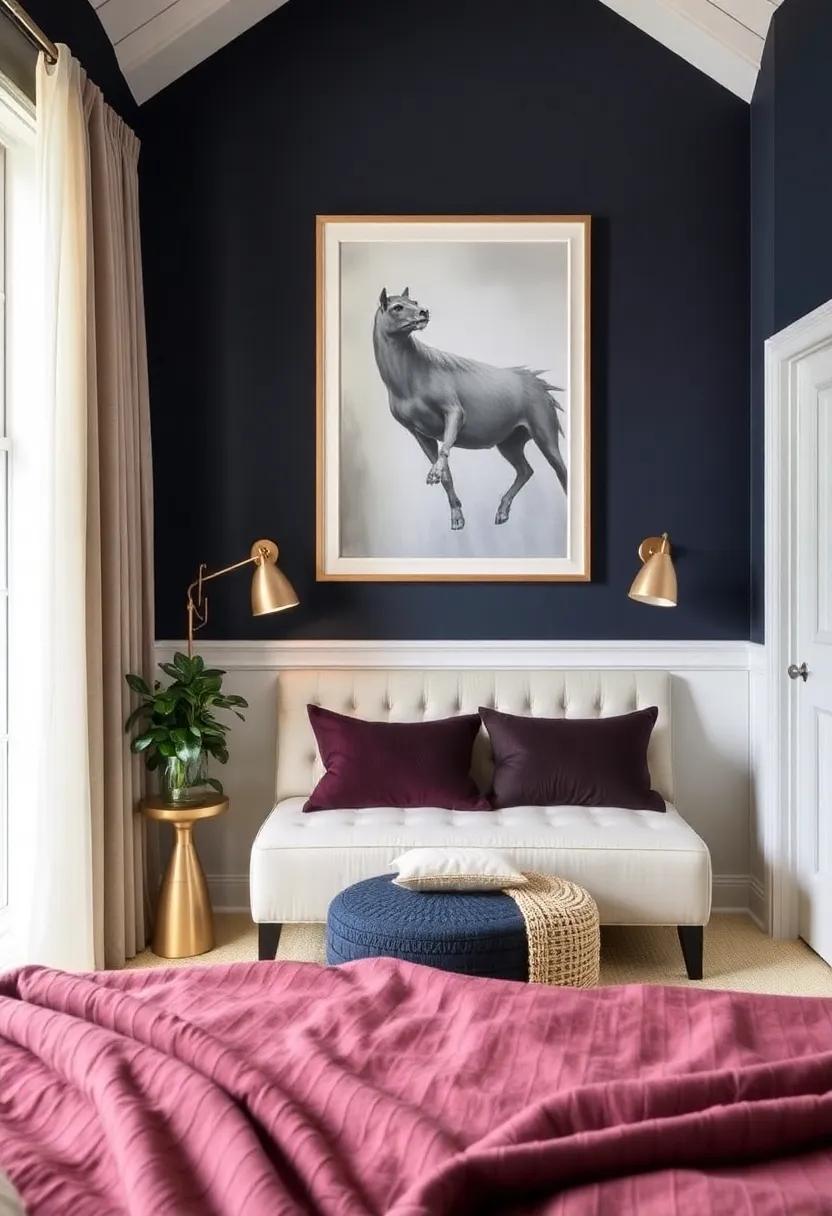
Designing a cozy and inviting reading nook can transform any bedroom into a sanctuary of peace and quiet. Start by selecting a corner of the room that receives ample natural light, as this will not only enhance the ambiance but also create a cheerful backdrop for your leisurely reads. Incorporate elements like a plush armchair or a chaise lounge, paired with a soft throw blanket and an assortment of decorative cushions to invite comfort. A small side table can serve as the perfect resting place for your favourite novels, a cup of tea, or even a small potted plant for a touch of nature.
To create a harmonious atmosphere, consider adding layers of soft lighting, such as a stylish floor lamp or wall sconces, that allow you to adjust the brightness according to your mood. Shelves filled with your cherished books can be both functional and decorative, serving as a personal library at your fingertips. Don’t forget to personalize your nook with items that inspire you, from framed quotes to artwork that resonates with your interests. With these thoughtful touches, your reading corner will become a beloved retreat within your transitional sanctuary.
Infusing Personality Through Color Accents in a Neutral Palette
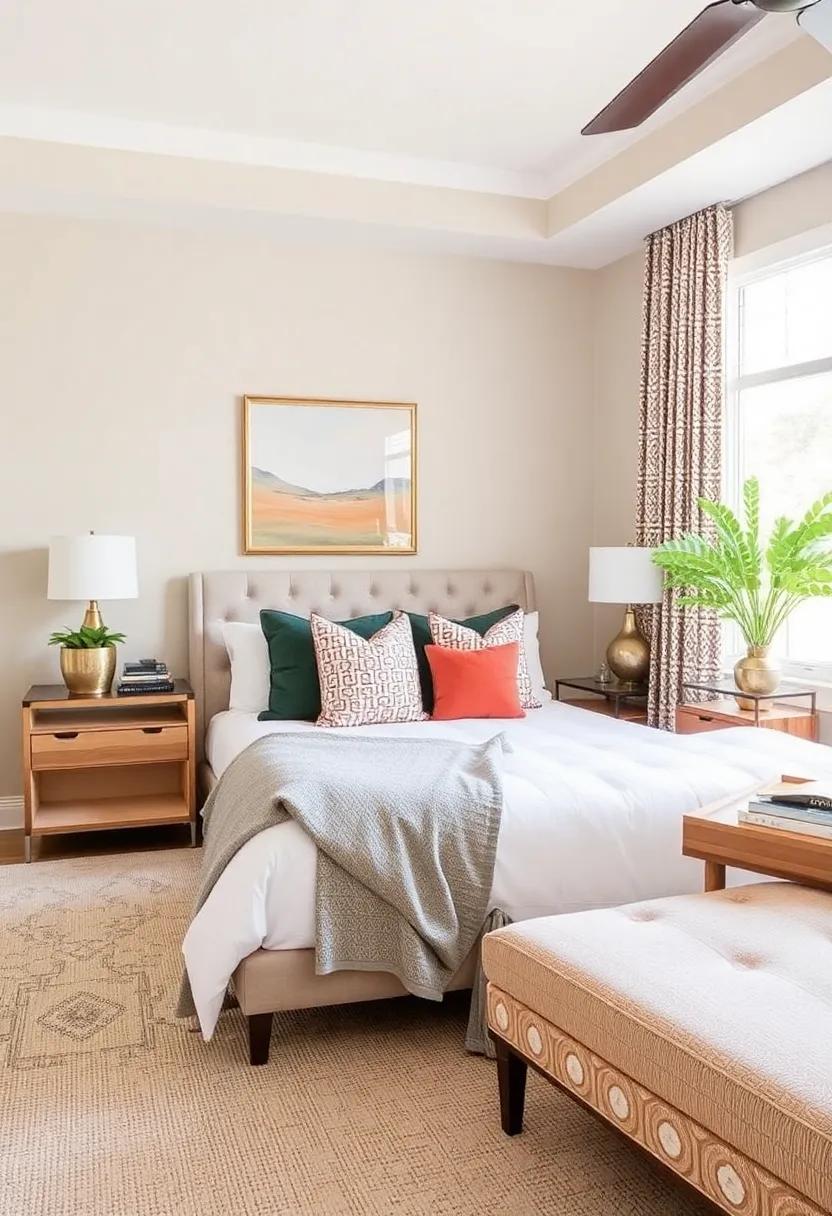
Incorporating vibrant colors into a neutral palette is an art that can breathe life into any transitional bedroom design. Accent pillows, artwork, and textiles serve as exceptional mediums to introduce personality while maintaining the calming essence of a neutral backdrop. Here are some ideas for effectively using color accents:
- Layer Textiles: Combine throw blankets and cushions in rich hues to create a cozy atmosphere.
- Statement Artwork: Choose a large piece or a gallery wall that introduces bold colors, drawing the eye and sparking conversation.
- Decorative Accessories: Opt for vases, lamp shades, or picture frames in unexpected colors for a subtle yet striking impact.
When selecting colors, consider your overall theme and the mood you wish to create. For example, deep blues or greens can evoke tranquility, while warm tones like rust or mustard may generate energy and warmth. It’s essential to create balance, so pairing brighter accents with neutral tones can achieve harmony in your space. Explore the color theory with this quick reference table:
| Color | Vibe |
|---|---|
| Soft Blue | Calming & Peaceful |
| Warm Yellow | Inviting & Cheerful |
| Deep green | Refreshing & Natural |
| Bold Red | Passionate & Energizing |
The Impact of Flooring Choices on Overall Bedroom Harmony
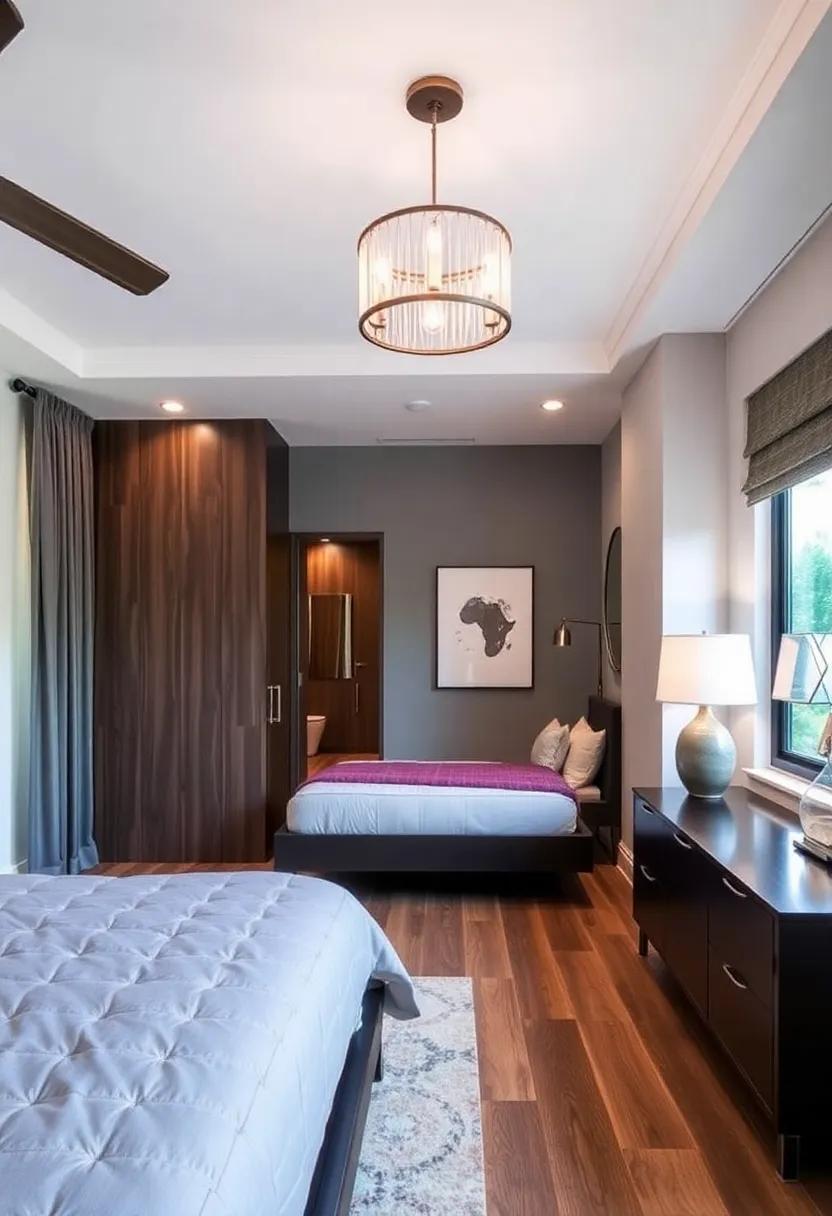
In the realm of bedroom design, flooring choices play a pivotal role in establishing a sense of harmony and balance. The right floor can either elevate the overall aesthetic or disrupt the tranquil atmosphere you wish to cultivate. When selecting flooring, consider how different materials resonate with your design theme.For example, hardwood floors lend a timeless elegance, while plush carpets invite warmth and comfort. Additionally, tiles can offer a modern touch and are especially appealing in transitional designs that blend various styles.
To ensure cohesive design, think about these aspects when choosing flooring:
- Color Palette: Select shades that harmonize with your wall colors and furnishings.
- Texture: Experiment with textures that complement other fabric and material choices in the room.
- Durability: Factor in the foot traffic and functionality, especially for spaces shared with children or pets.
Below is a comparison table showcasing common flooring materials:
| Material | Style | Comfort Level | Maintenance |
|---|---|---|---|
| Hardwood | Classic | moderate | Low |
| Carpet | Cozy | High | Moderate |
| Tile | Contemporary | Cool | High |
| Laminated | Versatile | Moderate | Low |
Designing for Versatility: Spaces that Adapt to Your Needs and Lifestyle
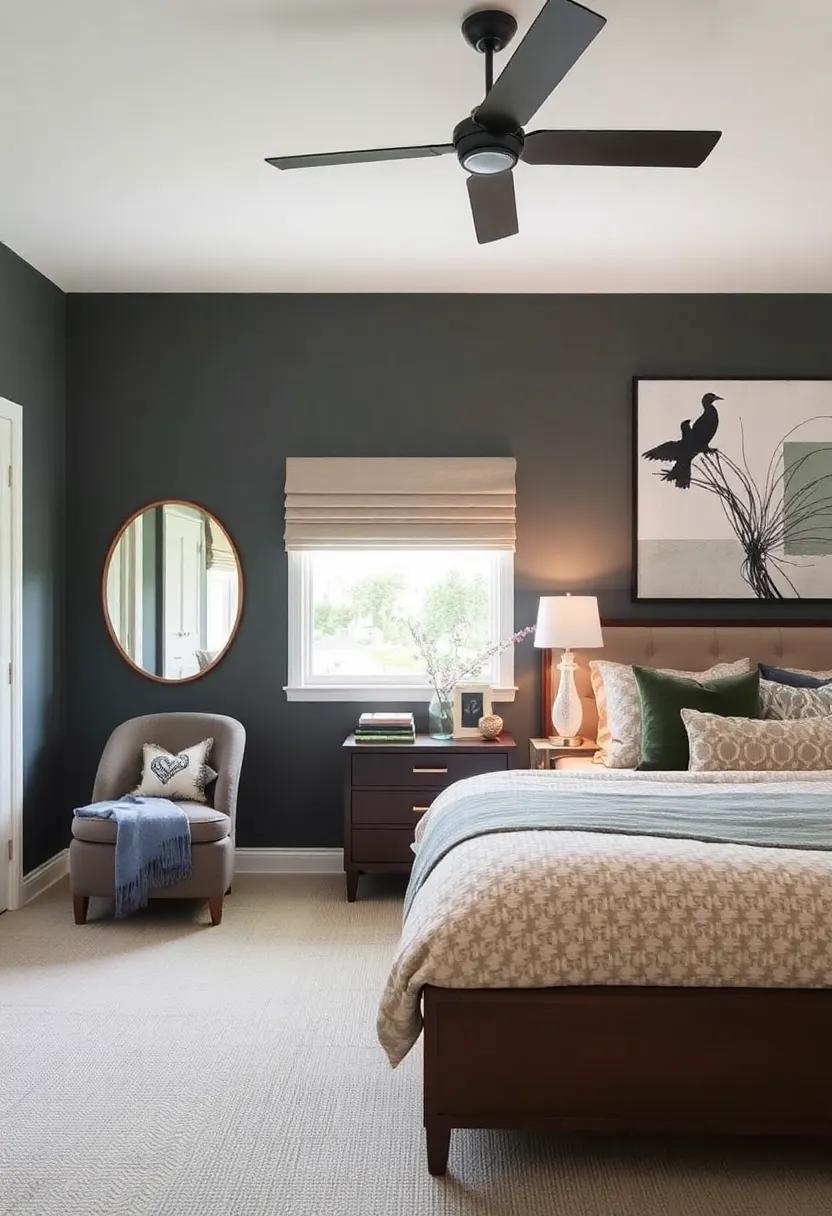
In a world where flexibility is paramount, interior design must evolve to accommodate the diverse lifestyle needs of individuals. Transitional bedroom spaces embrace this ethos by merging elements of contemporary and classic styles, creating a canvas that allows for easy conversion.To achieve a versatile design, consider implementing features such as multi-functional furniture and modular layouts. This could include:
- Adjustable lighting: Dimmable fixtures that cater to various moods and tasks.
- Stylish storage solutions: Beds with built-in drawers or expandable desks that can adapt to different purposes.
- Neutral color palettes: Easy to refresh with bold accent pieces that can be swapped out seasonally.
Another key aspect of designing adaptable spaces lies in the ability to integrate personal elements without sacrificing functionality.Think of incorporating textiles and accessories that reflect your identity while enhancing the room’s versatility. For instance, a table that doubles as a workspace during the day can transform into an inviting aesthetic display in the evening. Additionally, consider the layout:
| Element | Functionality |
|---|---|
| Layered rugs | Add warmth and texture, easily changed to alter looks. |
| Wall-mounted shelves | Utilize vertical space for both decor and necessities. |
| Flexible seating | Can be rearranged for different activities, from relaxation to social gatherings. |
Concluding Remarks
As you embark on your journey towards transforming your bedroom into a sanctuary of serenity and style, remember that transitional design allows you to weave together the old and the new, creating a space that is uniquely yours.Embracing harmony doesn’t mean sacrificing one aesthetic for another; rather, it’s about finding the perfect balance that resonates with your personal taste and lifestyle. With thoughtful choices in color, texture, and furnishings, you can cultivate an environment that invites rest and reflection.
Take the insights from this guide and experiment with confidence, allowing your bedroom to evolve into a harmonious blend of comfort and elegance. At the heart of transitional design lies the understanding that your space should reflect who you are—an ever-evolving tapestry of experiences, memories, and aspirations. so, as you set forth to create your ideal retreat, may you find joy in the process and tranquility in the outcome, nurturing a bedroom that truly feels like home.

